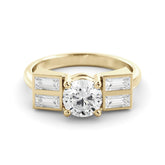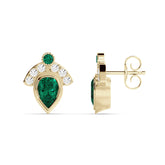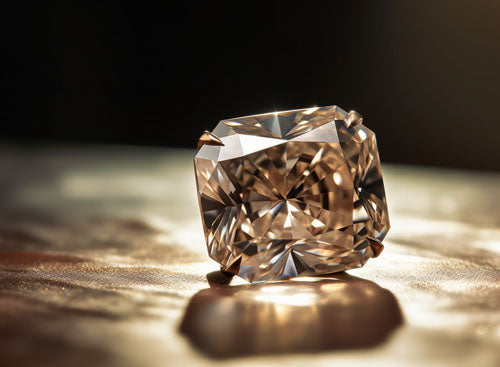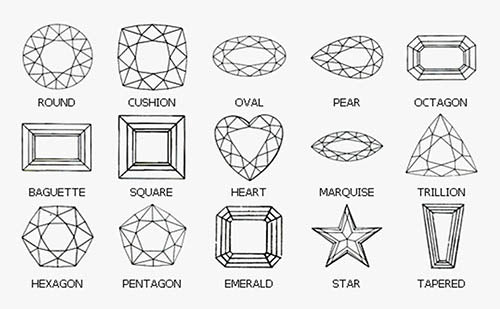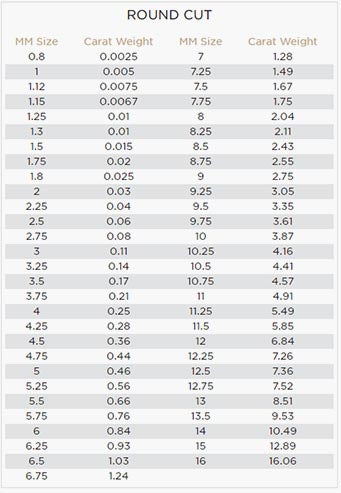Jewelry guide
So that you understand what we are actually talking about and what we offer
precious metals
- Contemporary jewelry incorporates a diverse array of precious metals, including silver, gold, platinum, palladium, titanium, and others.
Sterling Silver
- Silver, a precious metal alloy, is prone to oxidation yet remains suitable for various jewelry types. Luckily, it can be easily polished. There are different silver grades, but the most favored for jewelry is sterling silver (92.5%), known as silver 925, comprising 92.5% silver and the remainder copper. On the other hand, 99.9% pure silver, recognized as 999 silver, is exceedingly soft and not suitable for all jewelry designs, yet it is commonly found in handmade pieces, primarily in the form of silver threads.
Gold
- Gold, a precious and highly coveted metal alloy, is intricately woven into the cultural and economic history of humankind, even forming the basis of paper money. Due to its relative rarity, gold is easily divisible and processed, and, most significantly, incredibly durable. However, pure gold (Fine gold) is too soft for crafting jewelry, necessitating the customary practice of alloying it with other metals to attain desired properties such as color, luster, and hardness.
The different alloy compositions are denoted in Karats, representing varying levels of purity or relative gold content, in contrast to carats, which measure the final weight of diamonds (more on this below).
As the gold's purity increases, so does the weight of the jewelry, leading to significant differences in weight between two seemingly identical rings of different karats. The price of higher karat gold increases exponentially.
The primary metals from which our jewelry is crafted include:
Gold
Silver
Platinum
Palladium
Titanium
Upon purchase, our jewelry exudes an exceptional shine, yet over time, it may require occasional polishing to restore its initial luster (a complimentary service).
9 carat gold
- The minimum gold level, which is still classified as gold, contains 38% gold. Its color is slightly darker than that of 14-carat gold, commonly appearing in yellow and red hues, and rarely in white. This type of gold is prevalent in Europe, serving as a standard for engagement and marriage rings in England. Despite its affordability, this gold is robust and maintains a brilliant shine.
14 carat gold
- This karat gold, being the most prevalent in the Western world, is considered the standard for engagement, wedding rings, and inlaid jewelry. Boasting a deep, lustrous yellow color, 14-karat gold offers a reasonable price point coupled with excellent durability. With a purity level of 58%, it is available in various shades including yellow, red, and white.
Contrary to common belief, white gold tends to exhibit a slightly yellowish hue. Therefore, it is typically plated with rhodium to achieve the elegant and prestigious white appearance. Rhodium plating, known for its exceptional durability, is relatively affordable to renew when necessary.
18 carat gold
- Ideal for luxury jewelry, this gold's color exudes a particularly rich and deep tone, displaying a subtle inclination towards an orange hue (specifically in yellow gold). Both 18K and 14K white gold appear visually identical but differ in weight. Furthermore, 18K red gold is a rarity, featuring a stunning warm, pink, and antique tone, rendering it especially beautiful.
24 carat pure gold
- Pure gold, or FINE gold, represents the natural form of the gold element in its raw state. It is remarkably heavy and too soft to undergo jewelry crafting processes.
Platinum
- Platinum is a white precious metal whose name derives from the Spanish word "platina." It is a challenging metal to work with, exceptionally robust and stable, exhibiting excellent resistance to chemical processes and oxidation. Its price is equivalent to that of pure gold.
Gems / Pearls
-
At ARDONN, our design philosophy revolves around placing the gemstone at the heart of the jewelry. Gemstones, essentially minerals formed through the condensation of the Earth, undergo a process of formation by mother Earth involving immense pressure and chemical transformations over tens of thousands of years.
Each gemstone initiates as a relatively rough block of the same mineral, capable of being cut and polished into a myriad of geometric shapes, with the aim of accentuating the mineral's beauty properties, such as its color tone and luster.
The art of gemstone polishing entails a delicate balance between preserving as much of the gem as possible, in other words, maximizing its final weight, while simultaneously achieving an aesthetically pleasing, symmetrical, and flawlessly clean cut, often accomplished by the skilled hands of artisans.
- Choosing a selection results in a full page refresh.

